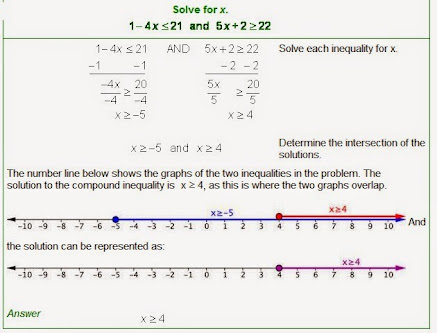Inequality 1
Understanding the INEQUALITY
Many mathematical techniques lend themselves to shortcuts.
Sometimes these shortcuts are great and other times
they seem to be "too tricky" to make sense when the
same type problem needs attention later.
One particular case is graphing an Open Sentence
that is an INEQUALITY.
For example:
Graph the Solution Set for "5 < x"
Some students are taught to always have the
"X" on the left so that the > or < will point in the
direction of the shaded solution. This requires
the student to sometimes "SWITCH" the direction
that the inequality sign points. (This switching only
occurs when "X" is on the RIGHT SIDE!)
so "5 < x" becomes "x > 5"
the graph is ...
The idea of 1) moving the x to the LEFT,2) switching the direction of "<" to ">"and then 3) pointing the arrow of the graph in thedirection of ">" does produce a correct graph.My suggestion is to encourage the studentsto read the inequality starting with "X"."5 < x"would be read "X is GREATER than 5."Since we are graphing "X's", this methodof translation will lead to the correctdirection of the ARROW in the graph.
*******************************
You may want to get a larger view of a VIDEO.
Click on the bottom right corner.
The PLAY arrow sometimes needs to be clicked TWICE.
Click on the bottom right corner.
The PLAY arrow sometimes needs to be clicked TWICE.
If you Click on an image
a LARGER view will appear.
a LARGER view will appear.
A general discussion of
No SOLUTION vs. All REAL NUMBERS
(This has similar results with = EQUATIONS)
Here is a More Difficult Inequality
where the VARIABLES completely disappear
when we try to get them onto one side of < or > or even =
The problems below are MORE DIFFICULT.
Your class may never do this level of problem.














Comments
Post a Comment